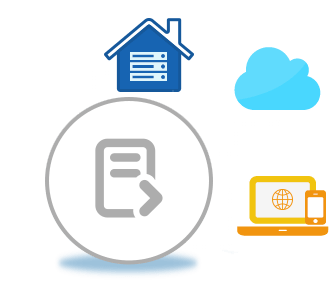Online Document Compression App and Python Code to Archive XML Files
Develop powerful Python based XML document archiving applications. Archive single and multiple XML documents into ZIP, RAR and more archiving options via your Python application. Freely compress various documents including XML files online via app with instant download.
Compress and Optimize XML Files Online using App
- Upload XML files to compress and optimize.
- Choose the Compression Level (Low, Medium or High)
- Click the “Compress” button.
- Download the compressed XML file.
- View and get the result of compression by checking its size and content quality.
Archive XML File via Python Compression API
- Reference API within the project directly from PyPI ( Aspose.ZIP )
- Use Archive() of Aspose.ZIP for Python via .NET.
- Add as many XML files as you want to archive using create_entry().
- Call save method and get the archived XML file as ZIP, RAR etc.
Code example in python to archive XML File
Python code to archive multiple XML Files
Develop XML File Archiving Application using Python
Need to develop python script or utility app to easily archive single or multiple XML files? With Aspose.ZIP for Python via .NET, child API of Aspose.Total for Python via .NET, any python developer can integrate the above API code to program archiving (ZIP, 7Zip, RAR, TAR, GZIP, BZ2, GZIP, LZ, CPIO, XZ, Z, CAB) app across documents. Powerful Python library for document archiving supports many popular formats including XML format.
XML archiving library for Python
There are alternative options to install ‘Aspose.ZIP for Python via .NET’ or ‘Aspose.Total for Python via .NET’ onto your system. Please choose one that resembles your needs and follow the step-by-step instructions:
- Install Aspose.ZIP for Python via .NET from PyPI
- Or Use the following pip commands
pip install aspose-zip.
System Requirements
- Python 3.5 or later is installed
- GCC-6 runtime libraries (or later).
- For Python 3.5-3.7: The pymalloc build of Python is needed.
Fore more details please refer to Product Documentation .
FAQs
- Can I use above Python code in my application?Yes, you are welcome to download this code. One can easily develop a professional solution to archive XML file using Python. Use Aspose XML compression API to develop high-level, platform independent software in Python.
- Is this document compression App work only on Windows?You have the flexibility to initiate document compression from any device, irrespective of the operating system it runs on, whether it be Windows, Linux, Mac OS, or Android. All that's required is a contemporary web browser and an active internet connection.
- Is it safe to use the online app to compress multiple XML documents?Of course! The output files generated through our service will be securely and automatically removed from our servers within a 24-hour timeframe. As a result, the download links associated with these files will cease to be functional after this period.
- What browser should to use App?You can use any modern web browser like Google Chrome, Firefox, Opera, or Safari for online XML document compression.
- How can I compress multiple XML files?Start by uploading one or more files you want to compress. You can either drag and drop your XML files or simply click inside the white area. Afterward, click the 'Compress' button, and our online compression app will quickly process the uploaded files.
- How long does it take to compress the XML files?This compression application operates quickly, It may take a few seconds to upload the files and compress them.
Explore File Compressor Options with Python
What is XML File Format?
XML, which stands for Extensible Markup Language, is a file format that shares similarities with HTML but has a different purpose and structure. The primary objective of XML is to store and transport data in a self-describing and platform-independent manner. It provides a set of rules for defining custom tags that allow users to create their own markup languages specific to their needs.
The key advantage of XML is its ability to represent data in a format that is both human-readable and machine-readable. This makes it suitable for creating data protocols and exchanging structured information over networks such as the World Wide Web (WWW). XML-based file formats, such as Microsoft Open XML, LibreOffice OpenDocument, XHTML, and SVG, utilize XML to define the structure and content of their documents.
The extensibility of XML is denoted by the “X” in its name, which implies that the language can be expanded to include new tags and elements as required. This flexibility allows XML to adapt to diverse data structures and requirements, making it widely adopted in various industries and domains.
However, one drawback of XML is its verbosity. XML files can be relatively large due to the inclusion of markup tags and repetitive structure. This can make XML documents more challenging to read and process, especially when dealing with large datasets. Care must be taken to manage the markup tags effectively to avoid errors or inconsistencies in the data.
